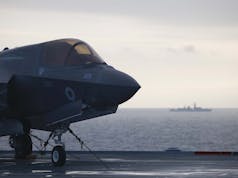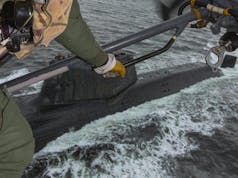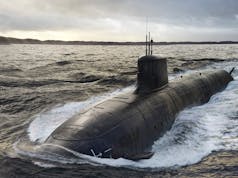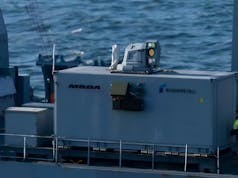Babcock International Group has announced its readiness to contribute to Poland’s emerging ORKA submarine programme, which is gaining momentum.
The company states that it is poised to leverage its extensive capabilities to assist in this important defence initiative.
Babcock says it has worked with submarine builders worldwide for decades, establishing a strong reputation for providing advanced solutions to various navies, including the Royal Navy, Royal Australian Navy, and the Spanish Navy. The company highlights a heritage of over 50 years in the design, manufacture, and integration of submarine weapons handling and launch systems.
According to Babcock, it provides support to the entirety of the Royal Navy’s nuclear fleet, which it has maintained for more than 60 years. This includes implementing design changes and ensuring operational capabilities essential for the UK’s defence.
The company claims a unique position as the sole support provider for the UK nuclear submarine fleet, along with its experience with the Canadian conventional diesel-electric submarine fleet. Babcock believes this expertise enables it to provide comprehensive support for Poland’s ORKA programme, addressing both new submarine types and the maintenance of older models.
Babcock is also currently collaborating with the PGZ-Miecznik Consortium in Poland to deliver the Miecznik frigates programme based on the Arrowhead 140 design. This partnership has provided Babcock with insights into Poland’s national defence priorities, which encompass security, industrial capabilities, and social value.
In terms of capabilities, Babcock aims to provide world-class submarine weapons handling and launch systems to naval customers globally. The company asserts its flexibility as a systems integrator, allowing it to work across various platforms and domains.
Babcock’s advanced technology solutions include state-of-the-art air turbine pump-driven positive launch systems, which the company claims offer compatibility with a variety of torpedoes, mines, and missiles.














Nice picture of an Upholder class 2400!!
Pity we flogged them to the Canooks, condering our current severe lack of SSN, we could use a few SSK right about now.
Assuming they would even still be operational at this stage?
Aye, regrettably far too true. Though we hung on to the S boats well after their individual supposed hull working lives. We may of had the sense to keep them.
Impossible these days to vary the safety case. Unless you can persuade someone to sign it off……:)
I thought the S boats had a dive limit put on them to eek them out?
The O class really were outliers in that regard. They were kept on to do the very sneaky stuff than an SSN was too big to do.
the Oberons were not actually that old, they generally decommissioned after 25/26 years..last boat commissioned in 67 and decommissioned in 93.
HMS Oberon
Launched 1959
Decommissioned 1991
32 years in the water…..which for that build was a long time.
Go for a wander round her at Chatham and wonder why the rear torpedoe tubes were removed!
That tells you why she was kept on!
No mate, the S boats didn’t have a dive limit put on them, they w ere just run hard and suffered from the three RC issues the US design reactor was prone to. That and milage was what killed them off.
I stand corrected.
Aren’t they still in use though looking to be replaced? Have had their problems though seem to have served pretty well.
Likely problems from being laid up when RN decommissioned them.
Fundamentally the design was good.
Interesting to think what you could do with the much higher energy density in batteries these days. The range and endurance without recharge must be 4x what they could achieve?
Notice the Russian trained killer waves in the foreground!😉
Are the Killer Whales included?